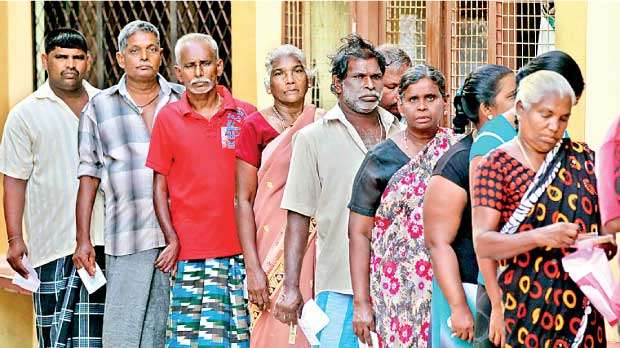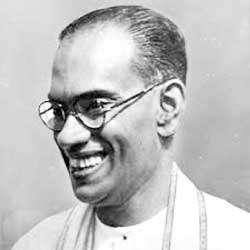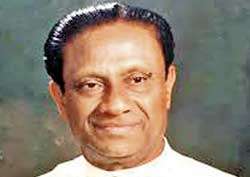Reply To:
Name - Reply Comment
Last Updated : 2024-04-26 05:10:00

The difference between stupidity and genius is that genius has its limits.
~Author Unknown
 There was a time when the average voter was taken for just another pawn in the cruel and conniving hands of politicians. The arrogance of the politician was so immeasurable; his disdain for the average voter was surpassed only by his greed for the material wealth he thought he could muster for his family and himself.
There was a time when the average voter was taken for just another pawn in the cruel and conniving hands of politicians. The arrogance of the politician was so immeasurable; his disdain for the average voter was surpassed only by his greed for the material wealth he thought he could muster for his family and himself.
Yet, the lip service he paid for the voter was equally immeasurable. When election time comes, his misplaced love for the voter found expression beyond words. His action could not match his rhetoric; pathetically dishonest and blatantly inauthentic, his election promises sounded hollow and empty. Yet the people voted for they were brainwashed by a masterfully blended concoction of lies and slogans.
This comical dynamic of political exchange occurred time after time yet, neither the politician nor the voter had any inkling about the serious damage that both of them caused to the fabric of society of which they were a part.
 But the enigma of voter-reaction remained unsolved. It was a matter for all pundits and political scientists to ascertain as to how the voter would respond to this political proposal and that election pledge. But accurate election predictions have, for the most part, been left to the unscientific modalities of astrologers. These astrologers, in order to win the hearts and minds of the misguided politicians, make predictions which usually consist of fairytale-like forecasts which politicians like to hear.
But the enigma of voter-reaction remained unsolved. It was a matter for all pundits and political scientists to ascertain as to how the voter would respond to this political proposal and that election pledge. But accurate election predictions have, for the most part, been left to the unscientific modalities of astrologers. These astrologers, in order to win the hearts and minds of the misguided politicians, make predictions which usually consist of fairytale-like forecasts which politicians like to hear.
Instead of telling the truth, these astrologers resort to the ultimate betrayal of their own profession by telling downright lies. The mind of the voter is so mysterious and so unpredictable. It is in the context of this voter-unpredictability one has to talk about the real state of mind of the voter in Sri Lanka.
In 1931 the Donoughmore Constitution replaced the Legislative Council of Ceylon with the State Council of Ceylon as the legislature of British Ceylon.
“The State Council was to consist of 58 members of whom 50 would be elected by universal suffrage and the remaining 8 members appointed by the Governor.”
The old Legislative Council was dissolved on 17 April 1931 and candidate nominations took place on 4 May 1931.
The Jaffna Youth Congress, an organization that campaigned for Ceylon independence, called for a boycott of the election since the Donoughmore Constitution didn’t grant dominion status to Ceylon.
Consequently, no nominations were received in four constituencies in the north of the country (Jaffna, Kankesanthurai, Kayts and Point Pedro).
In addition, nine other constituencies only had a single nomination each and consequently, the candidates were elected without a vote. Elections in the remaining 37 constituencies took place between 13 and 20 June 1931.’ (Source: Wikipedia 1931 Ceylonese State Council Elections).
Ever since 1931, Ceylon has been experiencing elections as a political fanfare wherein both the voter and the candidates engage in the exaggeratedly lucrative practice of political deal-making. Elections that were held before 1947, under the British Raj, hardly had the corrupting aspect which grew into our system from then on. The seat of power which all politicians seek is too lofty to be left alone; that seat of power, in addition to it being the procurer of prestige and a special step in the ladder of society-climbing, had the immeasurable potential for access to the national coffers. This dual character of the seat of power enticed many a pious politician and had gone to unchartered territories which even a livid revolutionary would not normally challenge.
Ceylon has been experiencing elections as a political fanfare wherein both the voter and the candidates engage in the exaggeratedly lucrative practice of political
deal-making
The seat of power is so alluring; its latent charm is so mesmerizing; it’s magic tantalizing, even an even-keel mind of an objective scientist. The journey of our Sri Lankan voter from 1931 to 2019 has not been a pleasant one. Whichever political party he belongs to, whichever political school of thought he subscribes to, to say that his path to 2019, over 88 years, nearly a century, has been one of immense satisfaction and contentment would be an outright falsehood. From 1947 up to 1956 was a period of placidity. Barring some irregular skirmishes in distant electorates and even in urban ones here and there, political violence was definitively an aberration not the norm.
But the polarization of the voting public began taking shape from 1952 onwards. S. W. R. D. Bandaranaike was instrumental in changing the history of our political culture altogether.
While some of the liberal democrats will credit him with the landmark achievement of bringing the common man under the broad umbrella of societal measure, others might argue that the changes he brought about were exceedingly damaging to the advancement of a harmonious community without being paranoid about the diverse organs that existed within its own precincts.
 Wittingly or unwittingly, Bandaranaike gave shape to a polarization along class lines, along caste lines and then ultimately along ethnic lines. 1956 was not just a year in which this polarization found clear and lucid enunciation and expression, it was the year in which these polarizing factors boldly appeared on the political platform. One can see this without being judgmental about the changes that polarization brought about in our society. One could surmise that the appearance of the five pillars of Sangha, Veda, Guru, Govi, Kamkaru in flesh and blood and it changed the rest of the story forever.
Wittingly or unwittingly, Bandaranaike gave shape to a polarization along class lines, along caste lines and then ultimately along ethnic lines. 1956 was not just a year in which this polarization found clear and lucid enunciation and expression, it was the year in which these polarizing factors boldly appeared on the political platform. One can see this without being judgmental about the changes that polarization brought about in our society. One could surmise that the appearance of the five pillars of Sangha, Veda, Guru, Govi, Kamkaru in flesh and blood and it changed the rest of the story forever.
The year 1956 gave true meaning to the branding of our two main political parties, the United National Party (UNP) and the Sri Lanka Freedom Party (SLFP). The SLFP became the ‘common Man’ party while the UNP got stuck with the negatives of the ‘other man’ party. This distinction between the two parties continues today, despite the rise and fall of the ‘Premadasa Exceptionalism’ in the UNP.
Premadasa too was a very common man. But his commonality was mainly based in urban Colombo. A product of Colombo Central, Premadasa’s beginnings were very much close to the real commoner than those possessed by Bandaranaike. Bandaranaike was a consummate product of the low country aristocracy. Educated at the elite S. Thomas’ College, Mt. Lavinia and then in Cambridge, SWRD’s appeal to the common man had a more romantic and romanticist touch. The common man does not want one of his own men preaching from atop; an aristocrat doing the same as special magic in that there is a sense of (whether real or unreal) magic being taught by a ‘big uncommon man’.
The culture clash so generated by the unbridgeable gulf between these two classes of people, between the ‘commoner’ and the ‘other’, found expression with more regularity after 1956. However, in the period we are examining, 1948 to present day, the Northern Tamil community remained united under the Vellala (Tamil equivalent of Govi Kula among Sinhalese) leadership of the Federal Party (FP) and then the Tamil United Liberation Front (TULF).
But that was only until the rise of Prabhakaran and the Liberation Tigers of Tamil Elam (LTTE) in the early eighties. Amongst the Northern Tamils, it was more of class distinction rather than one of culture. Tamil pundits might not agree with me, yet the leadership of the Tamil people in the North remained with the Colombo (or foreign)-educated class that enjoyed all the luxuries of a class of elite that decided for a great majority of Jaffna farmers and merchants.
Prabhakaran changed it but that change was violent and way beyond human endurance. The Tigers of Prabhakaran introduced a culture of violence and uncontrolled aggression, be it against the armed forces of the government, terrorist armies of other Tamil organizations or innocent unarmoured Sinhala villagers.
In his egoistic ambition of being the sole authority in the North, Prabhakaran managed to destroy all the glamour of the citadel of Tamil authority.
The average Tamil voter may remain utterly docile and obedient on the outside, but when one looks hard into the soul of him, one unvaryingly comes across a dissatisfied persona hidden dormant, an ember in the ashes, waiting for the ashes to be blown away by violent and revolutionary fire.
Reading of the mind of the voter is not a precise science. It is, in all sense, an art that needs to be developed by practising objective analysis and brutally candid deduction.
The propensities of the voter in each era, from 1947 to the present day have expressed themselves at different levels and as different species. Yet the culture of corruption that began its destructive inroads in the mosaic of our society and reached its summit during the Rajapaksa era came to sudden halt in 2015. But that halt was merely a temporary respite. The PC elections that were held in 2018 proved once again that the Rajapaksa era was not dead, as yet.
The decisive turn the voter took in 2015 should not be allowed to recede. Its death would mean a total collapse of a society leading to fragmentation of societal values that were held aloft for centuries.
A socially liberal and economically advancing community should not be left to the impulses of political manipulations and power-brokering of a different dimension.
Whether the voter is plain stupid or is ember in the ashes could well be decided at the next Presidential Election.
Let us hope for the best and prepare for the worst.
The writer can be contacted at vishwamithra1984@gmail.com

Add comment
Comments will be edited (grammar, spelling and slang) and authorized at the discretion of Daily Mirror online. The website also has the right not to publish selected comments.
Reply To:
Name - Reply Comment
US authorities are currently reviewing the manifest of every cargo aboard MV
On March 26, a couple arriving from Thailand was arrested with 88 live animal
According to villagers from Naula-Moragolla out of 105 families 80 can afford
Is the situation in Sri Lanka so grim that locals harbour hope that they coul